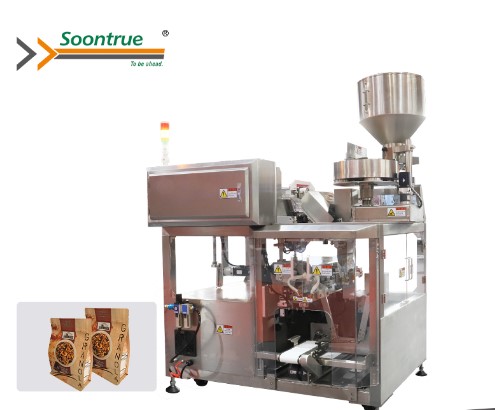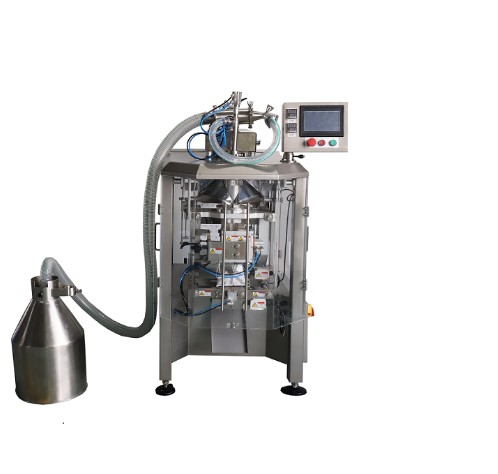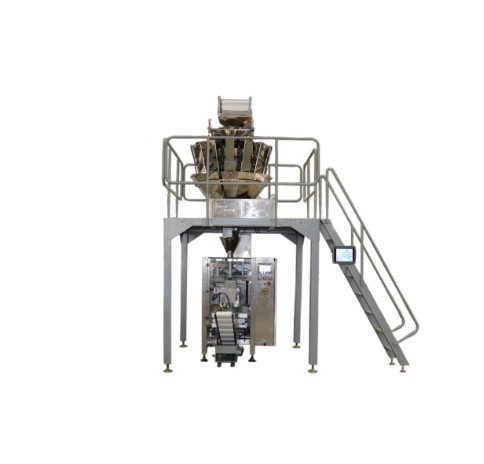Manual Vs Automatic Vertical Packing Machine: What Is The Difference?
In the world of packaging, the choice between manual and automatic vertical packing machines is a crucial decision that can significantly impact a company's efficiency, productivity, and bottom line. While both machines are intended to package things vertically, their operation, benefits, and limits differ. In this article, we will explore the key differences between manual and automatic vertical packing machines to help you make an informed decision for your business.
Manual Vertical Packing Machines
Manual vertical packing machines are ideal for small-scale businesses or specialized production where flexibility and adaptability are essential. These machines are often constructed of robust materials such as aluminum and metal, and they are simple to use, requiring little energy. Manual vertical packing machines come in a variety of colors, patterns, shapes, and sizes, making them suitable for packaging a wide range of bags based on industry requirements.
One of the main advantages of manual vertical packing machines is their low operating costs, as they do not require significant manual labor. However, manual machines typically have a lower throughput compared to automatic machines, making them better suited for small-scale or specialized production.
Automatic Vertical Packing Machines
Automatic vertical packing machines, often called vertical form fill seal (VFFS) machines, are intended to automate the entire packaging process, from bag formation to sealing. These machines are ideal for high-volume production and can handle a variety of packaging materials, including plastic, paper, and foil.
Automatic vertical packing machines offer several advantages over their manual counterparts:
Speed and Efficiency
Automatic vertical packing machines can produce far better throughput rates than manual packaging procedures. They are capable of producing a large number of packages per minute, making them ideal for high-volume production environments.
Consistency and Quality
Automatic machines apply the same amount of packaging material in the same way to each package or unit, ensuring consistent quality and reducing the risk of errors. This is particularly important for industries that require strict quality control and customer expectations for consistency.
Reduced Material Costs
Automatic vertical packing machines often utilize less packaging material than human methods, resulting in cost savings and lower environmental impact. For example, automatic stretch wrapping equipment can reduce material usage by half or more compared to manual methods.

Labor Redeployment
By automating repetitive and time-consuming packaging tasks, automatic vertical packing machines allow employees to focus on more complex, revenue-generating activities. This can lead to improved working conditions, reduced risk of injuries, and better employee retention.
However, automatic vertical packing machines also have some drawbacks:
Higher Capital Investment
Automatic vertical packing machines require a significant upfront investment. In addition to the initial purchase price, these machines also require ongoing maintenance and replacement parts.
Application Challenges
Certain distribution and manufacturing processes may not be well suited to packaging automation, such as refurbishing and repair operations where each package is unique, exceptionally big or small shipment cases, or severe indoor or outdoor settings that can corrode equipment.
Choosing Between Manual and Automatic Vertical Packing Machines
When deciding between manual and automatic vertical packing machines, several factors must be considered:
Production volume: Automatic machines are better suited for high-volume production, while manual machines are more appropriate for small-scale or specialized production.
Product characteristics: The type of product being packaged (e.g., solids, powders, liquids) will determine the specific filling mechanism required and the compatibility with the machine.
Packaging size and flexibility: Ensure the machine can handle the specific dimensions and range of sizes needed, with automatic machines offering more flexibility.
Budget and operating costs: Consider the upfront investment, maintenance costs, and long-term cost savings associated with each option.
Space availability: Automatic vertical packing machines require dedicated space for installation and operation.
Conclusion
The choice between manual and automatic vertical packing machines depends on a variety of factors, including production volume, product characteristics, budget, and desired packaging quality. By carefully analyzing the advantages and disadvantages of each choice, you can choose the vertical packing machine that best meets your needs and contributes to the success of your packaging operation.




